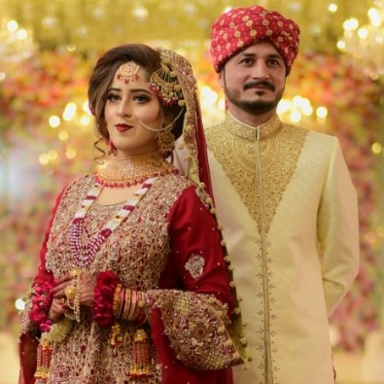Outline
I. Introduction
A. Brief overview of mirrorless and DSLR photography
B. Growing popularity in the photography industry
II. Mirrorless Cameras
A. Definition and features
B. Advantages over DSLR
1. Compact size and portability
2. Continuous autofocus technology
3. Electronic viewfinders
III. DSLR Cameras
A. Definition and features
B. Unique advantages
1. Optical viewfinders
2. Battery life and durability
IV. Image Quality
A. Sensor size and its impact
B. Low-light performance
C. Moonlight Studio Photographer’s perspective
V. Moonlight Studio Photographer
A. Introduction to Moonlight Studio
B. Contact information: 03002558893.
C. Our Website: moonlightstudio.pk
VI. Choosing the Right Camera
A. Considerations for beginners
B. Professional preferences
C. Budget considerations
VII. Comparison in Real-World Scenarios
A. Portraits and studio photography
B. Landscape and outdoor shooting
C. Action and sports photography
VIII. Adaptability and Learning Curve
A. Ease of use for beginners
B. Transitioning from DSLR to mirrorless
C. Moonlight Studio Photographer’s experience
IX. Future Trends in Photography
A. Technological advancements
B. Market predictions
C. Moonlight Studio’s approach to innovation
X. Conclusion
A. Recap of key points
B. Encouragement for exploration and experimentation
XI. FAQs
A. Are mirrorless cameras better than DSLRs for beginners?
B. How does Moonlight Studio adapt to evolving camera technologies?
C. What sets Moonlight Studio apart in the photography industry?
D. Can a DSLR user easily switch to a mirrorless camera?
E. What trends does Moonlight Studio predict in the photography market?
Mirrorless vs DSLR Photography: Capturing Moments with Clarity
In the dynamic world of photography, two giants stand tall—Mirrorless and DSLR cameras. As technology advances, the debate over which one reigns supreme continues to evolve. In this article, we delve into the intricacies of mirrorless vs. DSLR photography, exploring the features, advantages, and real-world applications. Join us on this journey as we navigate through the lenses of innovation, guided by the expertise of Moonlight Studio Photographer.
1. Introduction
Photography, once a niche hobby, has now become a mainstream passion for many. The surge in interest has led to a robust market, showcasing a diverse range of cameras. Mirrorless and DSLR cameras, in particular, have gained prominence, each with its own set of strengths.
2. Mirrorless Cameras
Definition and Features
Mirrorless cameras, as the name suggests, lack the traditional mirror mechanism found in DSLRs. They are characterized by their compact size and lightweight design.
Advantages over DSLR
2.1 Compact Size and Portability
One of the primary attractions of mirrorless cameras is their portability. Perfect for travelers and street photographers, these cameras offer high-quality imaging without the bulk.
2.2 Continuous Autofocus Technology
Mirrorless cameras excel in continuous autofocus, providing sharp and precise focus even in challenging conditions. This feature is a game-changer for capturing fast-paced moments.
2.3 Electronic Viewfinders
The absence of an optical viewfinder is compensated by electronic viewfinders in mirrorless cameras. These viewfinders offer a real-time preview of exposure and depth of field.
3. DSLR Cameras
Definition and Features
Digital Single-Lens Reflex (DSLR) cameras utilize a mirror mechanism to direct light to an optical viewfinder. Known for their durability, these cameras have been the industry standard for years.
Unique Advantages
3.1 Optical Viewfinders
DSLRs boast optical viewfinders, providing a direct optical path through the lens. Many photographers appreciate the natural and lag-free view offered by optical systems.
3.2 Battery Life and Durability
In situations demanding prolonged use, DSLRs often outperform mirrorless counterparts in terms of battery life. Their robust build makes them ideal for rugged environments.
4. Image Quality
Sensor Size and Its Impact
The size of the camera sensor plays a crucial role in determining image quality. Larger sensors generally capture more light, resulting in better image quality.
Low-Light Performance
One of the significant factors influencing low-light performance is the camera’s ability to handle noise. Both mirrorless and DSLR cameras have made significant strides, but nuances exist.
Moonlight Studio Photographer’s Perspective
We reached out to Moonlight Studio Photographer, renowned for their exceptional work in diverse environments. According to them, “Choosing between mirrorless and DSLR depends on the specific needs of the shoot. For low-light scenarios, both can perform exceptionally well with the right settings.”
5. Moonlight Studio Photographer
Introduction to Moonlight Studio
Moonlight Studio stands as a beacon of creativity, specializing in capturing moments that transcend time. Their dedication to perfection has earned them a stellar reputation in the industry.
Contact Information: 0300-2558893
For inquiries and collaborations, Moonlight Studio can be reached at 0300-2558893.
Website: moonlightstudio.pk
Explore the portfolio, services, and the artistic vision of Moonlight Studio on their official website.
6. Choosing the Right Camera
Considerations for Beginners
Aspiring photographers often face the dilemma of choosing the right camera. Beginners may lean towards mirrorless for its user-friendly features and compact size.
Professional Preferences
Professional photographers, on the other hand, might prioritize the unique advantages offered by DSLRs, such as optical viewfinders and robust build.
Budget Considerations
Budget plays a crucial role in decision-making. Both mirrorless and DSLR options cater to various price ranges, allowing photographers to find a suitable fit.
7. Comparison in Real-World Scenarios
Portraits and Studio Photography
For capturing detailed portraits in a controlled environment, both mirrorless and DSLR cameras can excel. The choice often depends on individual preferences and shooting styles.
Landscape and Outdoor Shooting
In outdoor settings, the lightweight nature of mirrorless cameras can be advantageous, while DSLRs may provide a more traditional and tactile experience.
Action and Sports Photography
Fast-paced scenarios demand quick autofocus and continuous shooting capabilities. Mirrorless cameras have shown prowess in this domain, but DSLRs are still favored by many sports photographers.
8. Adaptability and Learning Curve
Ease of Use for Beginners
Mirrorless cameras are often praised for their intuitive controls, making them suitable for beginners. The absence of a complex mirror mechanism simplifies the learning curve.
Transitioning from DSLR to Mirrorless
Photographers making the switch from DSLRs to mirrorless


